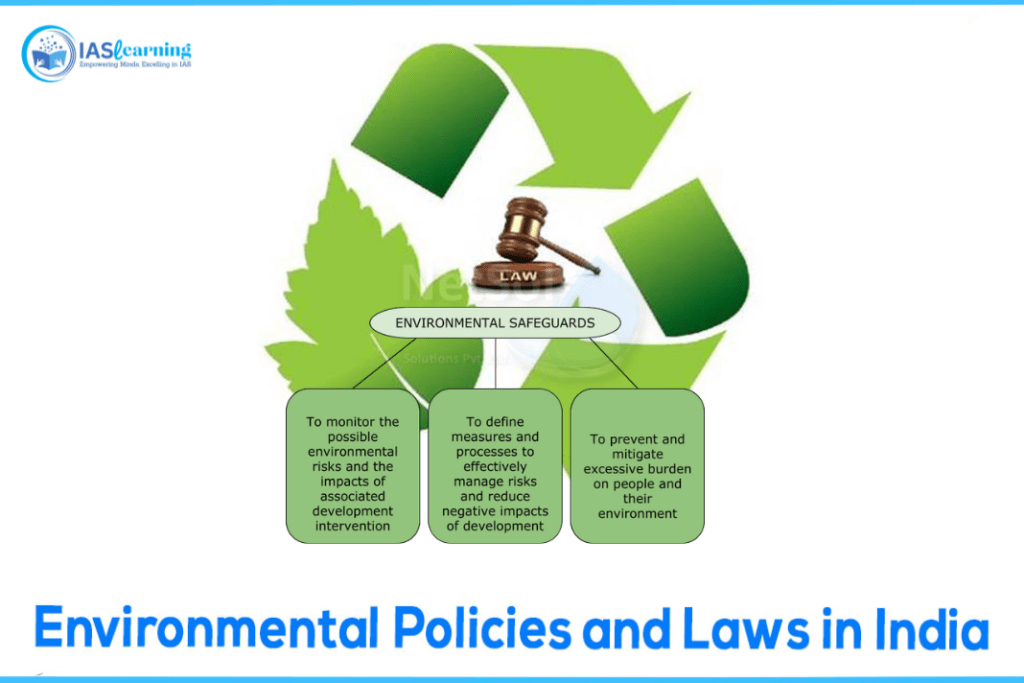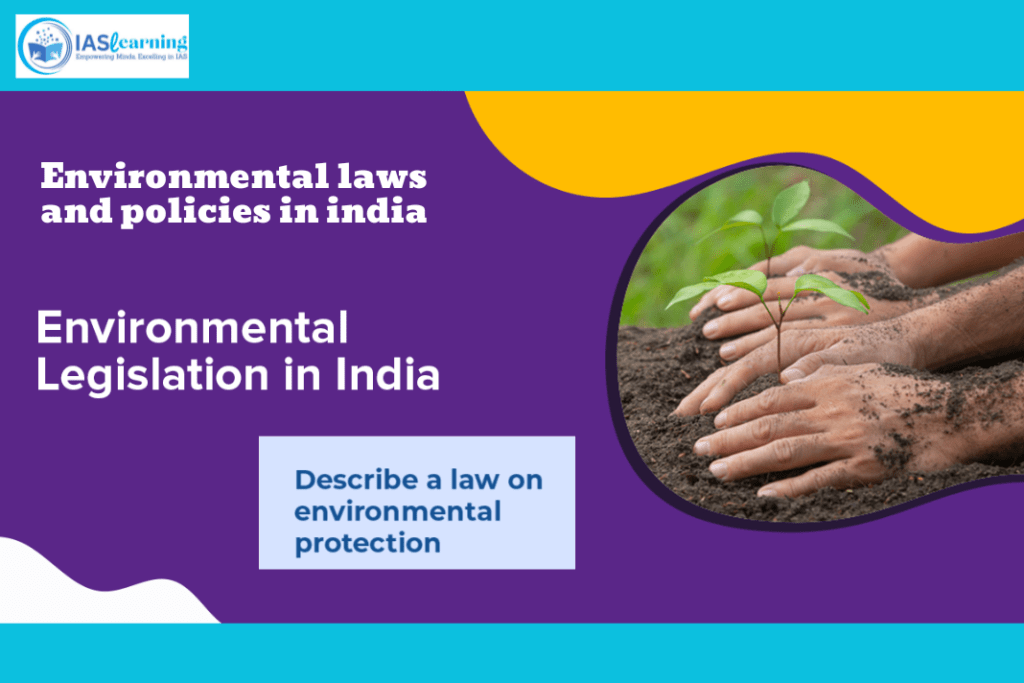Table of Contents
Introduction to Environmental Laws and Policies
In a world grappling with the repercussions of climate change and environmental degradation, it’s imperative to understand the role of environmental laws and policies in India. This article explores India’s commitment to preserving its natural resources and fostering sustainable development through an array of regulations and initiatives.
The Evolution of Environmental Laws and Policies

India’s journey towards formulating comprehensive environmental laws began in the early 1970s. The urgency to address environmental issues gained prominence during the United Nations Conference on the Human Environment held in Stockholm in 1972. This landmark event laid the foundation for India’s environmental policy framework.
The Environmental Protection Act, 1986
One of the pivotal moments in India’s environmental legislation was the enactment of the Environmental Protection Act in 1986. This act empowered the central government to take necessary measures to safeguard and improve the environment.
Key Environmental Policies
India’s approach to environmental protection is rooted in several key policies and strategies, aiming to strike a balance between economic growth and ecological preservation.
National Action Plan on Climate Change (NAPCC)
India’s NAPCC, launched in 2008, outlines a comprehensive strategy to combat climate change while promoting sustainable development. It consists of eight national missions, each targeting specific climate-related challenges.
Forest Rights Act, 2006
Recognizing the importance of tribal communities in conserving forests, this act grants legal rights to forest dwellers over the land they have inhabited for generations. It not only protects forests but also empowers marginalized communities.
National Action Plan on Climate Change (NAPCC)
The National Action Plan on Climate Change, launched in 2008, is a pivotal policy document that outlines India’s comprehensive strategy to combat climate change while simultaneously promoting sustainable development. It comprises eight national missions, each targeting specific climate-related challenges:
National Solar Mission
India’s National Solar Mission aims to promote the development and deployment of solar energy technologies to reduce greenhouse gas emissions and increase energy security.
National Mission for Enhanced Energy Efficiency
This mission focuses on improving energy efficiency in various sectors, including industries, transportation, and agriculture, to reduce energy consumption and mitigate climate change.

National Water Mission
The National Water Mission addresses water-related issues, such as water conservation, efficient water use, and sustainable management of water resources, to ensure water availability for all.
National Mission for Sustainable Agriculture
This mission seeks to promote climate-resilient agricultural practices and reduce emissions from the agricultural sector while ensuring food security.
National Mission on Sustainable Habitat
With rapid urbanization, this mission aims to promote sustainable urban planning and development, emphasizing energy-efficient buildings and public transport systems.
National Mission for Green India
Focused on forest and biodiversity conservation, this mission aims to restore and enhance forest and tree cover, as well as protect wildlife habitats.
National Mission for Sustainable Agriculture
This mission aims to promote climate-resilient agricultural practices and reduce emissions from the agricultural sector while ensuring food security.
National Mission on Strategic Knowledge for Climate Change
This mission focuses on creating and disseminating knowledge related to climate change, adaptation, and mitigation strategies.
Forest Rights Act, 2006
The Forest Rights Act, enacted in 2006, recognizes the historical injustice meted out to forest-dwelling tribal and indigenous communities. It grants legal rights to forest dwellers over the land they have inhabited for generations. This act not only protects forests but also empowers marginalized communities by giving them control over their resources.
Water (Prevention and Control of Pollution) Act, 1974
This legislation aims to prevent and control water pollution by regulating the discharge of pollutants into water bodies and setting water quality standards.
Air (Prevention and Control of Pollution) Act, 1981
Similar to the Water Act, the Air Act of 1981 addresses air pollution issues by regulating emissions from industries and vehicles, thereby improving air quality.
Wildlife Protection Act, 1972
This act provides legal provisions for the protection and conservation of wildlife in India. It designates protected areas and regulates hunting and poaching activities.
Challenges and Controversies

Despite India’s efforts to strengthen its environmental laws, several challenges and controversies persist. Rapid urbanization, industrialization, and population growth continue to exert pressure on the environment, leading to concerns about air and water pollution.
Rapid Urbanization and Industrialization
India’s rapid urbanization and industrial growth have brought economic prosperity but also environmental challenges. The expansion of cities and industries often leads to increased pollution, deforestation, and habitat destruction, impacting air and water quality, as well as biodiversity.
Air and Water Pollution
Air pollution is a significant concern in many Indian cities, with high levels of particulate matter and pollutants affecting public health. Water pollution, driven by industrial discharges and inadequate sewage treatment, poses a severe threat to water bodies and public health.
Deforestation and Loss of Biodiversity
The growth of infrastructure projects and agricultural expansion has resulted in deforestation and the loss of critical habitats for wildlife. This poses a threat to India’s rich biodiversity and can lead to ecological imbalances.
Inadequate Implementation and Enforcement
Despite robust environmental laws and policies, their effective implementation and enforcement can be challenging. Inconsistent enforcement across states and regions, bureaucratic delays, and corruption can hinder the intended impact of these policies.
Displacement of Indigenous Communities
Large-scale infrastructure projects, such as dams and mining, often lead to the displacement of indigenous and tribal communities who depend on the land for their livelihoods. This raises ethical and human rights concerns.
Water Scarcity and Resource Management
India faces significant challenges related to water scarcity and mismanagement of water resources. Competing demands for water from agriculture, industry, and households often lead to conflicts.
Controversy Over Environmental Clearances
The process of granting environmental clearances for development projects is often mired in controversy. Critics argue that some projects receive approval without adequate scrutiny of their environmental impact.

Climate Change Vulnerability
India is vulnerable to the impacts of climate change, including rising temperatures, changing precipitation patterns, and extreme weather events. Adapting to and mitigating these changes require substantial resources and policy adjustments.
Waste Management and Plastic Pollution
Inefficient waste management systems and the proliferation of single-use plastics contribute to environmental degradation. Proper disposal and recycling of waste materials are ongoing challenges.
Lack of Public Awareness and Participation
Engaging the public in environmental conservation efforts remains a challenge. Limited awareness and engagement hinder collective action for environmental protection.
Conclusion
Addressing these challenges and controversies requires a multifaceted approach that includes stricter enforcement of existing laws, sustainable development practices, public awareness campaigns, and proactive measures to combat pollution and protect natural resources. Achieving a balance between economic growth and environmental sustainability is an ongoing endeavor for India’s policymakers and citizens.
FAQs
- What is the significance of the Environmental Protection Act, 1986, in India?
- The Environmental Protection Act, 1986, empowers the central government to take measures to safeguard and improve the environment, making it a cornerstone of India’s environmental legislation.
- How does the Forest Rights Act, 2006, contribute to environmental protection?
- The Forest Rights Act grants legal rights to forest dwellers, helping conserve forests and empowering marginalized communities.
- What is India’s National Action Plan on Climate Change (NAPCC)?
- NAPCC is a comprehensive strategy to combat climate change while promoting sustainable development through various national missions.
- What are the key challenges facing India’s environmental laws and policies?
- India faces challenges such as rapid urbanization, industrialization, and population growth, leading to concerns about pollution and resource depletion.
- How can individuals contribute to environmental protection in India?
- Individuals can contribute by adopting sustainable practices, conserving resources, and supporting initiatives that promote environmental conservation…..Read more




